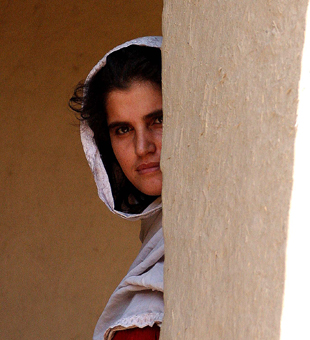The Fate of Afghan Women
Would America's withdrawal mean abandoning Afghan women?
 A fair and important question about the war in Afghanistan that I have had to field several times concerns the Taliban’s treatment of women. If we do not prevail militarily over the Taliban, I am asked, are we consigning the women of Afghanistan to treatment that is medieval at best and more likely cruel? Some very pointed questions along this line were raised last month at the release of the report of the Afghanistan Study Group, with which I have been associated and which calls for de-emphasizing the military effort in Afghanistan as a way of dealing with threats emanating from South Asia. The topic came up again a couple of weeks ago in a briefing on the group’s report that I helped to present to Congressional staffers.
A fair and important question about the war in Afghanistan that I have had to field several times concerns the Taliban’s treatment of women. If we do not prevail militarily over the Taliban, I am asked, are we consigning the women of Afghanistan to treatment that is medieval at best and more likely cruel? Some very pointed questions along this line were raised last month at the release of the report of the Afghanistan Study Group, with which I have been associated and which calls for de-emphasizing the military effort in Afghanistan as a way of dealing with threats emanating from South Asia. The topic came up again a couple of weeks ago in a briefing on the group’s report that I helped to present to Congressional staffers.
The issue is not new, although it has been given additional poignancy recently by stories of atrocities such as the disfigurement of a woman whose picture then appeared on the cover of Time. Prior to 9/11, the Afghan Taliban’s abysmal human rights performance—including, but not limited to, issues involving the status of women—was a topic in policy deliberations on Afghanistan and public debate about the policy. Policymakers in the George W. Bush administration considered the issue during their first eight months in office but decided, like their predecessors in the Clinton administration, to focus on the number one problem involving Afghanistan, which was Osama bin Laden and terrorism. They were not going to crowd the agenda on Afghanistan, much less do something as costly to the United States as waging a war there, on behalf of Afghan human rights.
There are two appropriate responses to the question about Afghan women, which my colleagues and I voiced at the forums mentioned above and that are given as well in a column this week by Nicholas Kristof, with Kristof basing his answers on first-hand observations and conversation in South Asia. One response is that the subjugation and abuse that we in the West find abhorrent is not limited to the Taliban and is not solely an artifact of Taliban ideology. Rather, it is based in customs and a culture that go well beyond the Taliban. Kristof says that he has observed more of the sort of disfigurement highlighted by the Time story even in Punjab, the most powerful province of Pakistan and the one with the biggest westernized elite, than he has in Afghanistan.
The other response is that continued warfare is degrading the human rights and human security of Afghan women. The war has done more to make their life miserable than barbaric edicts from the Taliban or anyone else. As Kristof puts it, “let’s not fool ourselves by thinking that we’re doing favors for Afghan women by investing American blood and treasure in an unsustainable war here.”
The issue involved tugs appropriately hard at our sense of compassion and our sympathy. We need not just compassion, however, but clear thinking about what outcomes—continued versus curtailed war, Taliban or no Taliban—actually will make a difference in the plight of the women of Aghanistan.
